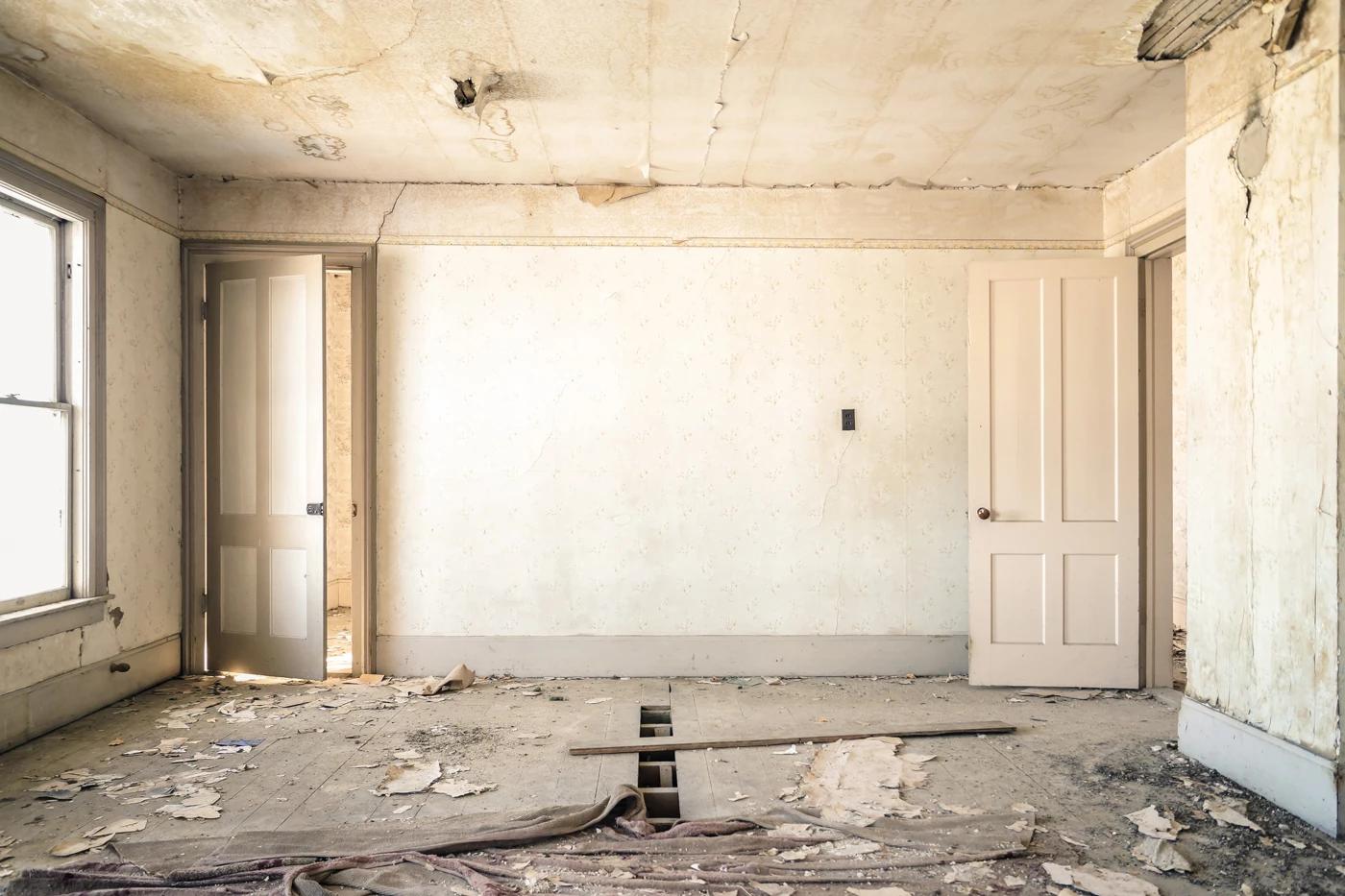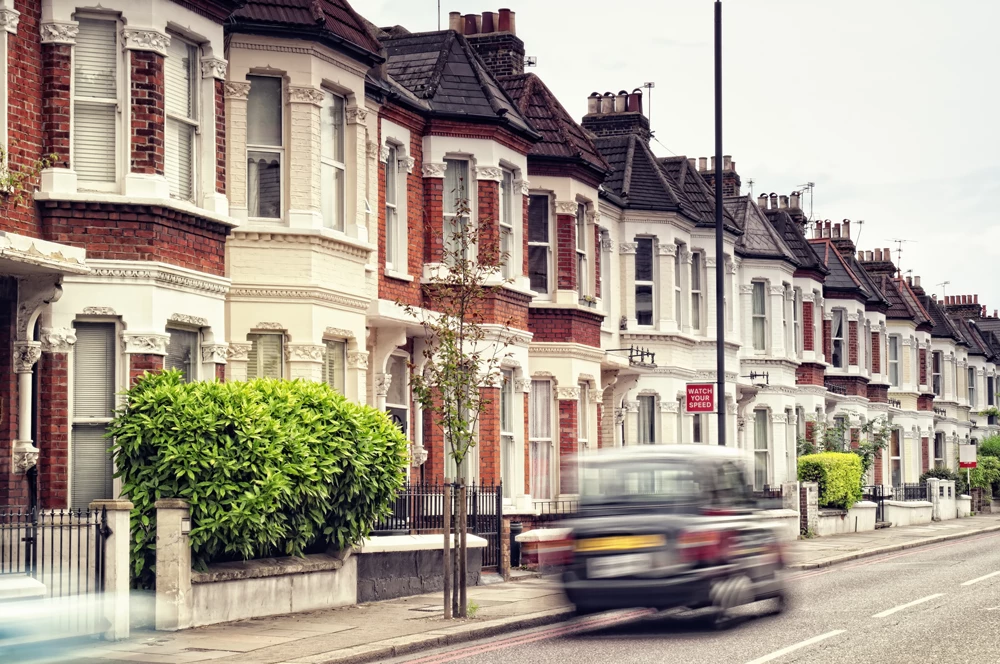05/09/2019 | Category: Home Insurance

Did you know that there are now more than 216,000 homes sitting empty across England? According to figures from the Ministry of Housing, Communities and Local Government cited by the Guardian, that’s the highest level since 2012.
Research from the Liberal Democrats reported by the BBC in 2018 revealed that there are more than 11,000 homes around the country that have been vacant for a decade or more.
What is an empty property?
When we say ‘empty property’, we’re referring to residential properties or commercial premises that are unlikely to be occupied, or capable of occupation, and that have been vacant for six months or more.
Why do people leave their houses empty?
There are many reasons why people leave houses unoccupied for an extended period of time. They include:
House sale or probate
Sometimes, it can be because of delays with a normal house sale or you’re waiting for probate after the death of the owner.
Residential care
Other times, it’s because the owner has been taken into long-term residential care and can no longer live at the property.
Renovation
You might have just purchased the house and it needs some renovation works carried out before you, or your new tenants, can move in. Or you may have bought the property with the intention of doing it up, only to run out of money.
Travelling
Maybe you have just hit retirement and you’re thinking of travelling for an extended period of time. Or perhaps you’ve been asked to travel for business and work away from home for a while.
Renting
Sometimes, it’s just because you rent out the property and it’s taking a long time to find suitable tenants.
As RICS explains, areas of the country that have suffered industrial decline often see lots of empty housing. Even though these properties are relatively cheap compared to property in other parts of the country, they’re still too expensive for people on low income to buy, and they can fall into a state of disrepair.
According to Government statistics quoted by RICS, the worst towns and cities outside of London for long-term vacant properties are:
• Birmingham
• Bradford
• Liverpool
• Leeds
• Sheffield
• Sefton
• Sunderland
• Doncaster
• Newcastle upon Tyne
• Wakefield
But it’s not just counties in the north of England that are being affected.
More recent figures from Action on Empty Homes reveal that there are more than 6,000 empty properties in Kent, worth a staggering £1.8 billion.
As of May 2019, there are over 700 properties in Bath and North East Somerset that have been lying vacant for six months or more, according to the Bath Echo, with two of those properties having been empty since 1994.
And the Isle of Wight Council has just launched its Empty Property Strategy 2019-2022 in a bid to tackle the problem there. The council is offering to help property owners get their houses and commercial properties back into regular use and provide affordable housing for people living on the island.

Can you insure an empty house?
Yes, you can insure an empty or unoccupied house but you may need non-standard home insurance in order to do so. This is because most insurers will only cover a property that’s vacant for up to 30 to 60 days at a time. Anything over that and the property is deemed to be more at risk from structural damage from things like fire, floods or storms and escape of water or oil.
Imagine if you didn’t notice your roof tiles had been damaged in a storm, causing damage to the roof underneath, or your frozen pipes had burst while the property had been vacant over the winter. Having non-standard home insurance in place can help cover the cost of repairs in incidents like this.
Remember too that an increase in the number of empty homes in a particular area can also have a negative effect on the local community, attracting squatters, vandalism and criminal activity like robbery or theft.
In the event that squatters have taken over your property, non-standard home insurance can cover any legal expenses that you may need in order to remove them.
In some instances it can also include public liability insurance, which covers any damage that’s caused by your property – for instance, if a roof tile falls off and smashes your neighbour’s car windscreen.
How is non-standard home insurance calculated?
Insurers work out the cost of your non-standard home insurance by looking at things like the property’s value, where in the country it’s located, and the level of security at the property. Improving the security measures you have in place, for instance by installing CCTV, may well help to bring down the cost of your premium.
Talk to a specialist like Insurance Choice to see what types of security changes might make your non-standard home insurance less expensive.
You should also think about the amount of excess you’re willing to pay in the event of a claim and the amount of no claims bonus you have accrued, as these things could help to lower your premiums, too.
Protecting your property with non-standard home insurance
Aside from the property being vacant for an extended period of time, there are many other things that can trigger the need for non-standard home insurance – thatched or flat roofs, a history of subsidence at the property, if the property is in a flood risk area are some examples.
Some insurers simply won’t be able to offer you cover if your home isn’t of standard construction or it’s in a high-risk area.
And it’s not all about the property, either – some insurers may also struggle to find you cover if you have previous criminal convictions. And if they are able to offer you a policy, the premiums could be inflated because they can’t properly assess the risk.
Here at Insurance Choice, things are different. We’re specialists in non-standard home insurance so we can find the right kind of cover for you, for a price that won’t break the bank.
Talk to our friendly team to get a quick quote for non-standard home insurance today and make sure that your investment is protected for the future.
